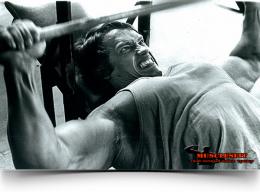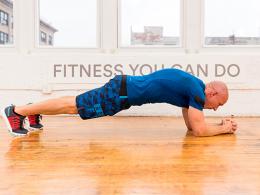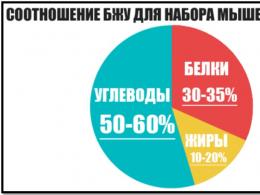Sports are the best exercises for developing a powerful back
Without effective development of the back, one cannot build a massive and athletic V-shaped figure. Unfortunately, it is with this - the second largest muscle group in our body - that people have the most difficulties.
The problem is that we are not accustomed to working with the muscles of the back in everyday life, if we are talking about the latissimus dorsi, round, trapezoid. Instead, we usually use our hands (for opening doors, for example) and we transfer this practice to strength exercises, trying to work with biceps, hands, but not with stronger and larger muscle groups. As a result, the arms get tired quickly, and since the load is atypical for them, they develop poorly, and the back muscles practically do not work.
That is, it is extremely important to focus on the technique of performing exercises. Especially girls. Due to physiological characteristics, ladies have a much higher risk of injury in movements such as pulling a vertical block to the chest if they are trying to work with progression in loads. But usually it doesn’t even come to progression, since weak female hands (namely, forearms) get tired much earlier than at least some kind of load hits the back.
It is necessary to learn to feel the muscles of the back, that is, to develop a neuromuscular connection. And this can be done only with the correct technique for performing the exercise. Thus, there is no need to rush anywhere and start working with a minimum weight, even if you consider yourself a strong person.
First you need to get the cerebellum to remember the correct movement, and this will require several hundred repetitions before starting to increase the load. Raise it ahead of time, break the technique, the body will remember the wrong movement, and as a result, either you will quickly hit the ceiling on the working weights, not having achieved a result in the development of the back, or you will be injured.
More movements with less weight - better results with more
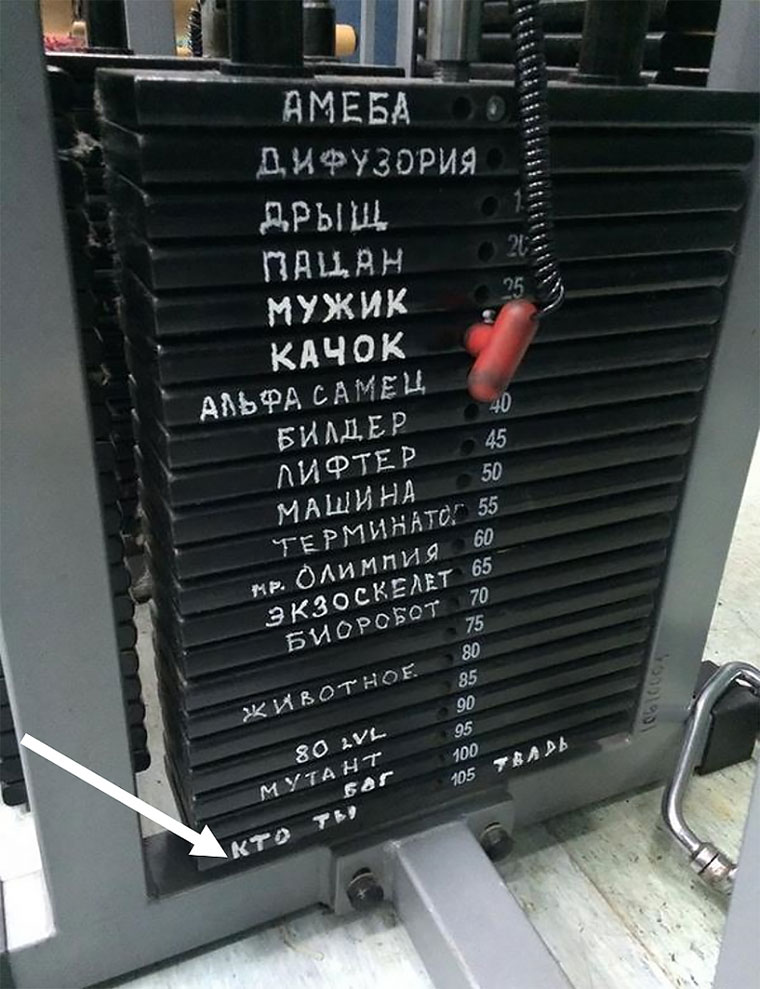
The back muscles are responsible for pulling movements, as are the biceps, as well as the rear deltas. Most often, it is the hands that like to steal the load, so it is important to understand what exactly you need to reduce.
It is usually recommended during the movement to reduce the shoulder blades in the peak phase in order to feel exactly the work of the back muscles and strain what should be strained during the pulls. But there is an ambush here. Due to the lack of a good neuromuscular connection, it is basically difficult for a beginner to make his back work and bring his shoulder blades together - a person does not feel the muscles and pulls with what he is used to pulling, that is, with his hands.
The problem is solved with the help of an experienced instructor, and if there is none, then let the training partner touch those muscles that should be tensed. Tactile sensations are an additional signal to the brain to tense the necessary muscles and it will be easier to focus on their work.
Again, do not rush to increase the load. The weight should be felt, but not break your technique for performing the exercise. You will make several hundred movements in 3-4 workouts, get used to them, the cerebellum will remember which motor units to connect in the exercise, after which you can begin to progress with the weight of the weight. This is important for any exercise, but especially for back training. The main problem with developing this part of the body is that people can't learn to tense the right muscles for years, and pull weight with anything but their backs.
I also warn in advance against some exercises that are supposedly easier to learn, but in fact they injure the shoulder joints, without giving any advantages over safer options. These are any traction and pull-ups for the head. I talked about this in detail in the corresponding article:
Not only the size is important, but also the shape
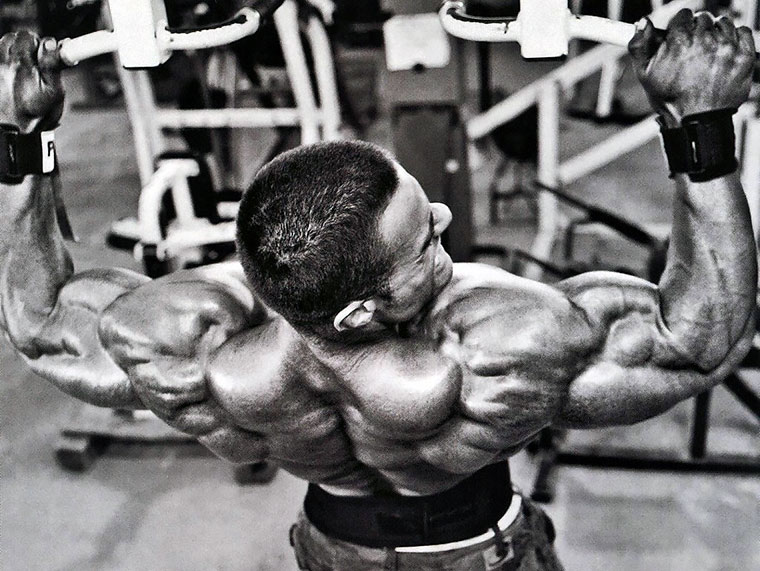
A wide, but flat back visually loses a lot to a more compact, but bumpy and embossed. Relief is developed with the help of a balanced diet, and I talked a lot about this in the section. But the tuberosity and visually massive form are the result of reasonably selected exercises and a well-constructed weekly microcycle. Let's talk about this in more detail.
The traditional division of exercises for the back into “width” and “thickness” is not entirely correct, although it is convenient for describing certain movements. Like, pull-ups with a wide grip or a similar pull of a vertical block to the chest is the width, and the pull of the block to the stomach with a narrow grip is the thickness. It would be more correct to divide the exercises into those that form the overall muscle mass of the back and separately those responsible for its impressive shape. Moreover, these will be two separate training days in a weekly cycle.
Do not forget about the deltas, especially the back beam, which also gives visual width. Although it works well in almost all traction movements on the back.
I think those who follow my sports column already know that in order to specialize in a particular muscle group, it is necessary to load it at least twice a week. Or build a cycle in such a way as to take into account the work of muscles as assistants. Who missed it, pay attention to articles about and. In addition, periodization in the load is also important, which is written about, plus a reasonable selection of weights and. Accordingly, before moving on, I advise you to read the articles mentioned above.
We select exercises for the effective development of the back
In fact, everything is simple. The tuberosity and impressive appearance of the back are given by well-developed trapezoids, and not only and not so much their upper part, but the middle one, located between the shoulder blades. That is, it makes sense to allocate a separate day for the comprehensive development of the trapezium, and since the muscle group is not very large, you can add study to it and, for example,.
Trapezoidal work
By the way, working out the trapezoid is not as easy as it seems at first glance. If you think enough is enough classic shrugs with dumbbells or a barbell, then you are mistaken. Although shrugs are needed too for the development of the upper part of the trapezium. Aleksey "Shredder" Klakotsky demonstrates excellent technique for performing this exercise:
The main exercise for the effective development of the lower part of the trapezium is push-up T-bar pull:
Not all gyms have such a simulator, and the usual T-traction, when it is enough to rest the end of the neck in a corner, and load the second one with pancakes, will not work. In this position, it is difficult to strain the inner back due to the load on the lower back. The alternative would be linkage…
... Or dumbbell rows on an inclined bench:
To finally stagger the inside of the back, do traction block to the chest with a rope handle:
In all these movements, the rear delta also works. An excellent finishing exercise will be the combined traction of the lower block on the trapezoid and the rear delta (watch from 23 minutes):
The last exercise also makes sense if you decide to shake the deltas along with the trapeze.
Formation of a powerful and wide back
A separate day should be devoted to shaping exercises for the back. That is, those that will give you the bulk of the muscle mass.
There is no need to invent a bicycle here. The best exercise is wide grip pull-ups- we put it first in training:
Pay attention to the deflection in the lower back and the fact that you need to reach for your chest, and not pull yourself up exactly like a “soldier”, as taught at school. In addition, I do not advise you to fully extend your arms in the lower range of motion, and even more so to relax your back. Firstly, it is traumatic, especially when you start pulling up with weight on the belt (you can jerk your triceps and round muscles). Secondly, the arms are too overloaded during the undermining from the bottom point and as a result they will get tired before the back muscles are effectively loaded.
An excellent formative exercise that can be done immediately after pull-ups (or vice versa) - row of a barbell (dumbbell or dumbbell) in an incline:
Yaroslav told all the most important things in the video, I will only add from myself so that they do not forget to reduce the shoulder blades to the maximum. You can also make a slightly smaller slope and hang significantly more plates on the bar to load the inside of the back more and hit the rear deltas, but this is provided that the technique for performing the exercise has already been perfectly studied and you feel the muscles work well.
The next exercise on this training day, you can continue to expand your back by doing pull of the upper block to the chest(I apologize for the vertical video and some confusion in the narrative, but it was in it that I told all the important points - what can be done, what cannot be done, the range of motion):
A good alternative for girls (loads hands less) - reverse pull of the upper block:
Another option - horizontal block pull(and again a vertical video, but if you are worried about your lower back and want to really learn how to do this exercise correctly - watch the whole video):
How to build a micro cycle with an emphasis on the back
I note that the options proposed below and any splits are, in principle, focused on more or less experienced people with at least six months or a year of experience with good muscle tone and a set exercise technique. Until then, full-body workouts will work great for you, and they will be much more effective for basic muscle formation.
The most convenient way to do four day split the following format (I personally worked in this mode for four months at the end of last year):
- Monday- pectoral + trapeze + deltas (one basic type of dumbbell press, one on the back delta to finish it off after the pulls).
- Tuesday- legs (plus any lagging groups as desired, for example - neck).
- Wednesday- relaxation.
- Thursday- back (forming exercises) + deltas (emphasis on the middle delta, for example, pulling the bar to the chin + swinging dumbbells to the sides).
- Friday- arms (2-3 exercises for triceps, 1-2 for biceps, since he did a good job on traction on Thursday).
- Saturday- relaxation.
- Sunday- relaxation.
Too lazy to visit the gym four times a week, or simply do not have enough strength, then here three day split:
- Monday- chest (two exercises, for example, a bench press and push-ups from the bars or a dumbbell bench press on an inclined bench at 30 °) + trapeze + deltas (two basic exercises, for example, an army press and a barbell row to the chin).
- Tuesday- relaxation.
- Wednesday- legs (3-4 exercises) + triceps (2 exercises, for example, close grip press and French or extension of the arms in the block).
- Thursday- relaxation.
- Friday- back (forming exercises) + deltas (one exercise for the back beam) + biceps (a couple of basic exercises like PSB and lifting dumbbells while sitting on an inclined bench).
- Saturday- relaxation.
- Sunday- relaxation.
Do not chase the mass, but work on the form
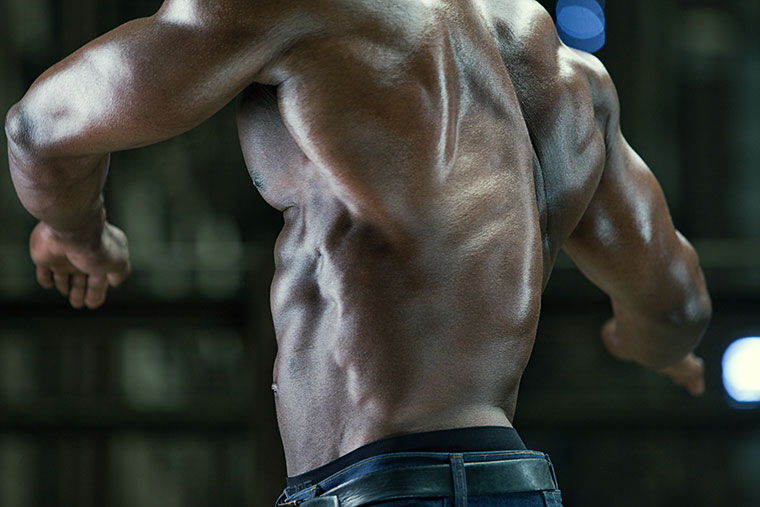
Mass is a relative concept. You can be big, but at the same time not look very aesthetically pleasing due to a significant amount of fat. And it's not good for health either. And you can be of medium size, but due to the good shape and relief, look much more spectacular and feel better.
Corroded up to 118 kg (with a height of 190 cm) in a massive "pig-pig", but the state of health is not so hot, shortness of breath, sweating and other troubles. Now I weigh 103 kg, I feel great, and due to the systematic work on the form, I don’t look much more compact than myself at 118 kg. And what is the point of chasing the result on the scales, if there is horror-horror in the mirror?
By the way, this is a common mistake of girls going on a diet. They dream of the cherished "minus 5-10 kg" on the scales, achieve this, then look in the mirror - and there is skin, bones and fat. Moreover, the monthly cycle is often violated. But you can do the so-called recomposition of the body - build muscle mass, slightly reduce the layer of fat and due to this, get a really beautiful shape while maintaining health. But just diet and the race for numbers on the scales will not achieve this.
Returning to the men's conversation, I note that the muscle gain is significantly better with a small amount of fat within the natural values for men - about 12%. We added 10% of calories on top of the main consumption and we are working systematically. Strength indicators are growing - fine, which means that the muscles are growing too. They stop - we add a little complex carbohydrates, but at the same time we make sure that fat does not begin to gain.
And don't forget about reasonable load cycling. It is impossible to constantly improve your results. In 2-3 months we reached the peak in strength, actively rested for a couple of weeks, rolled back by 20-30% in working weights - repeated the cycle, slightly surpassing our old result. Two steps forward, one back and two steps forward again.


